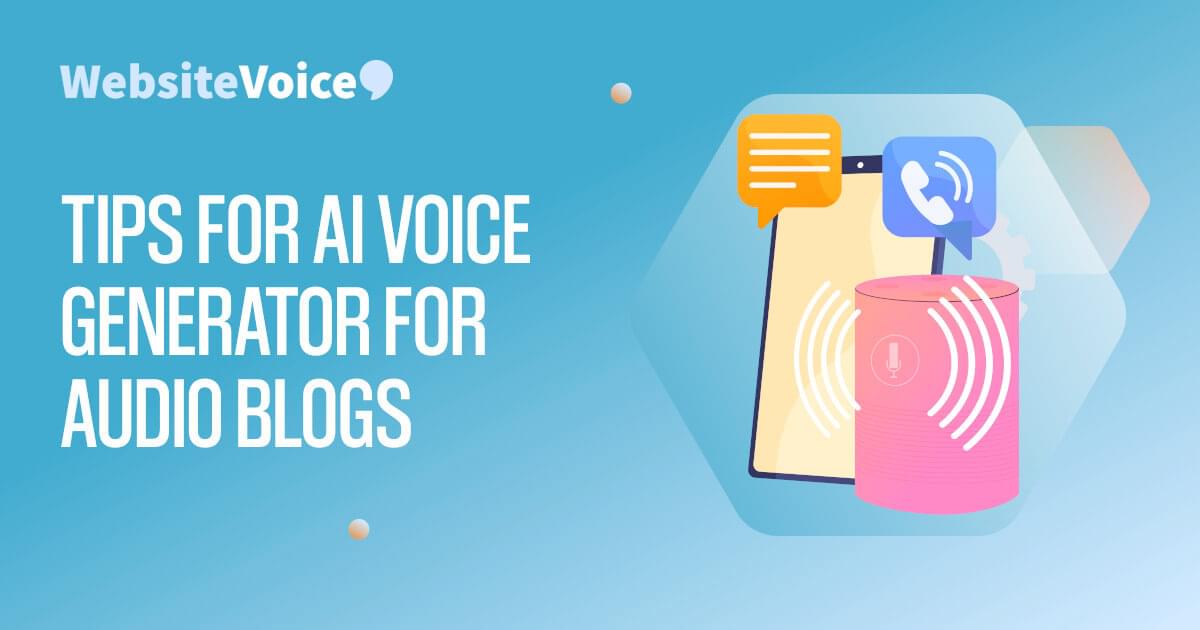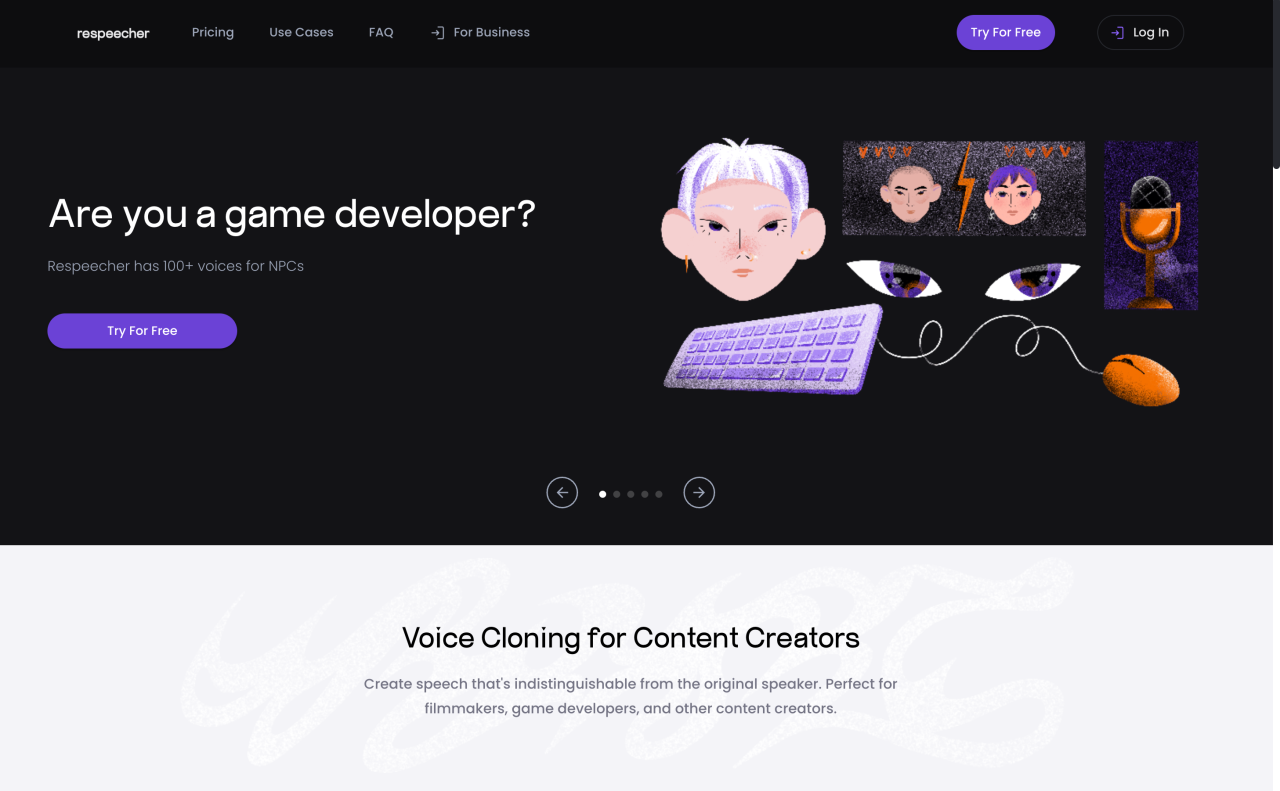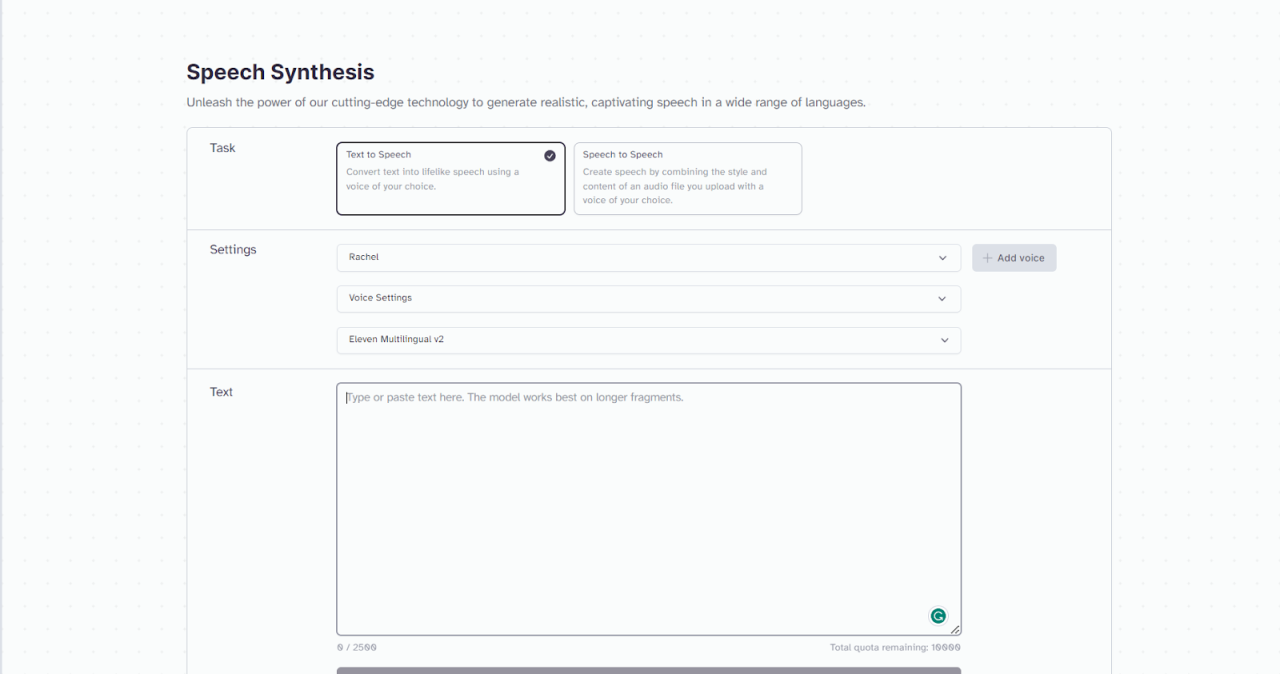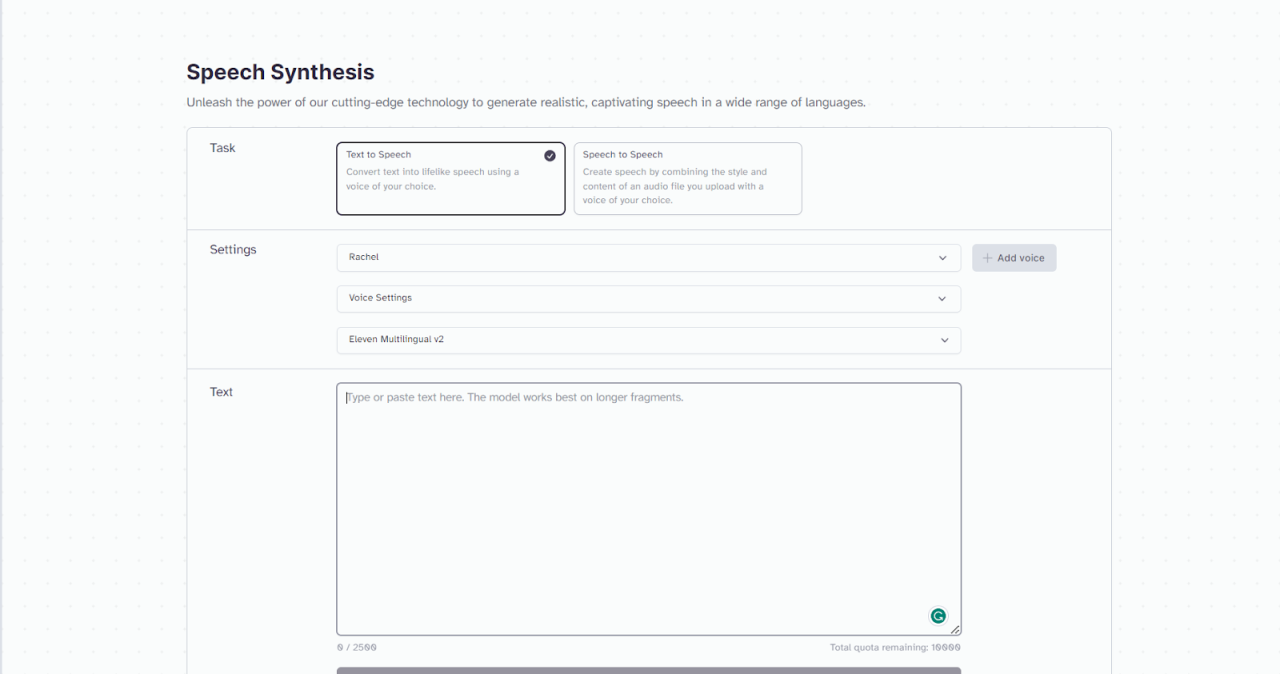How to choose the best AI voice generator for e-learning? It’s a question many educators and content creators are asking. Finding the right AI voice can transform your online courses, making them more engaging and accessible. This guide will walk you through the process, helping you navigate the options and make an informed decision that best suits your needs and budget.
We’ll cover everything from understanding your specific e-learning requirements and the characteristics of a good AI voice to evaluating key features, exploring different voice styles, and considering technical integration. We’ll also address accessibility and inclusivity, ensuring your e-learning content reaches a diverse audience. By the end, you’ll be equipped to select an AI voice generator that elevates your e-learning experience.
Understanding E-learning Needs and Voice Generator Requirements
Choosing the right AI voice generator for your e-learning materials is crucial for creating an engaging and effective learning experience. The ideal voice needs to complement your content, ensuring learners remain attentive and understand the information presented.
AI voice selection depends heavily on factors such as the target audience’s age range, the subject matter’s complexity, and the desired tone of the narration. A children’s educational video will require a drastically different voice than a corporate training module.
Ideal Characteristics of AI Voices for E-learning
An ideal AI voice for e-learning should be natural-sounding, expressive, and adaptable to various content types. Natural speech avoids robotic monotony, while emotional expression adds nuance and helps learners connect with the material. Consider the age range of your learners; a younger audience might respond better to a more playful voice, while older learners may prefer a more authoritative tone.
Picking the right AI voice for your e-learning materials is key; you want something clear and engaging. Think about the tone you need – serious or playful? While I’m researching options, I just saw this news: Canucks: Dakota Joshua leaves game with apparent leg injury. Anyway, back to AI voices, consider testing a few free trials before committing to a paid subscription to find the perfect fit for your learners.
The subject matter also influences voice selection. A science lesson might benefit from a clear, precise voice, whereas a creative writing course might use a more expressive, engaging voice.
Picking the right AI voice generator for your e-learning platform is key; consider factors like naturalness and language support. You might be surprised to learn that many of these generators rely on hardware manufactured in China, as highlighted in this interesting article: China is the manufacturing superpower | Hacker News. So, while you’re evaluating voice quality, remember the global supply chain influences even the tech powering your e-learning materials.
Importance of Natural Speech and Emotional Expression
Natural-sounding speech is paramount. A robotic or monotone voice can quickly disengage learners. Emotional expression, conveyed through intonation and pacing, enhances comprehension and retention. A voice that can express enthusiasm, empathy, or even a touch of humor can make the learning process more enjoyable and effective. Think of the difference between hearing a flat recitation of facts versus a story told with feeling and inflection.
Voice Selection for Different E-learning Content Types
Different e-learning content formats benefit from different voice characteristics. Narration often requires a clear, even-paced voice. Interactive exercises might use a more conversational, encouraging tone. Quizzes could utilize a neutral, objective voice. Adapting the voice to the specific content type optimizes the learning experience.
Human Voiceover vs. AI Voice Generator: A Comparison, How to choose the best AI voice generator for e-learning
Choosing between a human voiceover and an AI voice generator involves weighing various factors. The following table summarizes the key differences:
| Feature | Human Voiceover | AI Voice Generator | Considerations |
|---|---|---|---|
| Naturalness | Generally higher | Improving rapidly, but can still sound artificial in some cases | Budget and desired level of realism |
| Cost | Significantly higher | Generally lower | Project budget and scale |
| Speed and Efficiency | Slower, requires scheduling and coordination | Faster, can generate voiceovers quickly | Project timeline and urgency |
| Flexibility | Requires re-recording for changes | Easy to make edits and revisions | Need for revisions and iterative improvements |
| Emotional Range | Wider range of emotions | Limited emotional range, improving steadily | Importance of conveying specific emotions |
Evaluating Key Features of AI Voice Generators
Several AI voice generators offer impressive text-to-speech capabilities. A careful evaluation of their features is necessary to select the best option for your e-learning project.
Comparing Text-to-Speech Capabilities

Let’s compare three popular AI voice generators (Note: Specific performance can vary based on updates and individual experiences): Google Cloud Text-to-Speech, Amazon Polly, and Microsoft Azure Text-to-Speech. All three generally offer high pronunciation accuracy, but the naturalness varies. Google Cloud and Amazon Polly often score higher on naturalness, especially with their more advanced voices. However, the “best” option depends on the specific requirements of your project and the nuances of the text being converted.
Essential Features of AI Voice Generators
When choosing an AI voice generator, consider the following features:
- Voice Customization: Ability to adjust parameters like speed, pitch, and tone to match your brand and content.
- Multiple Language Support: Essential for reaching a global audience.
- API Integrations: Seamless integration with your e-learning platform or content creation tools.
- SSML Support: Support for Speech Synthesis Markup Language (SSML) allows for fine-grained control over pronunciation and intonation.
- Voice Cloning: The ability to clone a specific voice, creating a consistent brand voice or replicating a presenter’s style.
Importance of Voice Cloning Technology
Voice cloning technology allows you to replicate a specific voice, creating a consistent brand voice across your e-learning materials. This is particularly useful for creating a personalized learning experience or maintaining brand identity. Imagine using a well-known instructor’s voice to deliver lessons, even if they’re not directly involved in recording.
Factors to Consider for Cost-Effectiveness
Cost-effectiveness depends on factors such as the number of words generated, the chosen voice, and the features utilized. Some generators offer pay-as-you-go pricing, while others use subscription models. Evaluate the pricing structure against your project’s scope and budget to determine the most economical option.
Exploring Voice Styles and Tones for Different Learning Materials
The choice of voice style and tone significantly impacts learner engagement and comprehension. A well-chosen voice can enhance the learning experience, while a poor choice can be distracting or even off-putting.
Voice Styles and Their Suitability
The following table illustrates how different voice styles can be applied to various e-learning modules:
| Voice Style | Suitable Content Type | Example Scenarios | Tone Considerations |
|---|---|---|---|
| Formal | Lectures, presentations, complex instructions | University course lectures, corporate training | Authoritative, clear, precise |
| Informal | Interactive exercises, discussions, informal assessments | Online tutorials, casual learning modules | Friendly, conversational, approachable |
| Enthusiastic | Motivational content, introductions, engaging activities | Introductory videos, gamified learning modules | Energetic, upbeat, positive |
| Serious | Sensitive topics, safety instructions, critical information | Medical training, safety procedures | Calm, respectful, authoritative |
Impact of Voice Tone on Engagement and Comprehension
A friendly, enthusiastic tone can increase learner motivation and engagement. A clear, precise tone improves comprehension, especially for complex topics. A calm, reassuring tone can reduce anxiety in stressful learning situations. The careful selection of tone is a critical element in creating an effective learning experience.
Impact of Vocal Pacing and Intonation
Vocal pacing and intonation significantly influence learner experience. A fast pace might overwhelm learners, while a slow pace might cause boredom. Appropriate intonation adds emphasis and emotion, making the content more engaging and memorable. The balance of pacing and intonation is essential for optimal comprehension and engagement.
Tips for Selecting the Optimal Voice Style and Tone
- Consider your target audience and their learning styles.
- Align the voice style with the subject matter and learning objectives.
- Test different voices and tones to see which resonates best with your learners.
- Ensure consistency in voice style and tone throughout the e-learning materials.
Technical Aspects and Integration Considerations: How To Choose The Best AI Voice Generator For E-learning
Successfully integrating an AI voice generator into your e-learning workflow involves understanding the technical requirements and compatibility aspects.
Seamless Integration into E-learning Platforms
Most AI voice generators offer APIs or SDKs that facilitate easy integration with various e-learning platforms. The specific integration process varies depending on the chosen generator and platform. However, generally, it involves using the API to send text to the generator and then embedding the generated audio file into your e-learning content.
File Formats and Compatibility
AI voice generators typically support common audio formats like MP3, WAV, and OGG. Ensure that the chosen format is compatible with your e-learning platform. Some platforms might have specific requirements for audio file encoding or bitrate.
Technical Requirements
The technical requirements for using an AI voice generator are generally minimal. You’ll need a stable internet connection and sufficient processing power to handle the audio generation. The specific hardware and software requirements vary depending on the chosen generator and the complexity of your project.
Picking the right AI voice generator for your e-learning platform is key; consider factors like naturalness and tone. While you’re making those decisions, it’s worth noting completely unrelated news like the fact that Federal courts won’t refer Clarence Thomas for DOJ investigation , which highlights how different areas of life intersect. Back to AI voices: also check for customization options and platform compatibility to ensure a smooth learning experience.
Step-by-Step Guide to Creating E-learning Audio Narration

- Choose an AI voice generator and select a suitable voice.
- Prepare your script, ensuring it’s clear, concise, and free of errors.
- Use the generator’s API or interface to convert your text to speech.
- Download the generated audio file in the desired format.
- Import the audio file into your e-learning platform or video editing software.
- Sync the audio with your visual content.
- Test the audio to ensure quality and clarity.
Accessibility and Inclusivity in E-learning Voice Selection
Creating accessible and inclusive e-learning materials is crucial for ensuring that all learners have an equal opportunity to succeed. The choice of AI voice plays a vital role in achieving this goal.
Importance of Accessible E-learning Materials

Learners with disabilities, such as visual or auditory impairments, rely on accessible learning materials. Choosing AI voices that are clear, understandable, and avoid potentially offensive language or stereotypes is essential for inclusivity. Providing transcripts or captions alongside audio content further enhances accessibility.
Choosing AI Voices that Support Diverse Accents and Languages
Selecting AI voices that support diverse accents and languages allows you to cater to a wider audience. This fosters inclusivity and ensures that learners from various linguistic backgrounds can easily access and understand the e-learning materials. Consider offering multiple language options for your content.
Ensuring Clarity, Understandability, and Avoiding Offensive Language
The chosen AI voice should be clear, easy to understand, and free of potentially offensive language or stereotypes. Avoid using voices that perpetuate harmful biases or reinforce negative representations of certain groups. Careful selection of voice and content ensures a respectful and inclusive learning environment.
Guidelines for Selecting Inclusive Voices
- Prioritize clear and understandable voices.
- Offer multiple language and accent options.
- Avoid voices that perpetuate harmful stereotypes or biases.
- Ensure that the voice tone is appropriate for the subject matter.
- Provide transcripts or captions to enhance accessibility.
Closure
Selecting the perfect AI voice generator for your e-learning content is a crucial step in creating an engaging and effective learning experience. By carefully considering your needs, evaluating key features, and prioritizing accessibility, you can transform your online courses. Remember, the right AI voice can significantly improve learner comprehension, engagement, and overall satisfaction. So, start exploring the options and create impactful e-learning materials that resonate with your audience!
FAQ Explained
What file formats should I prioritize when choosing an AI voice generator?
Prioritize widely compatible formats like MP3 and WAV. Check if the generator supports formats compatible with your e-learning platform.
How important is customer support when selecting an AI voice generator?
Excellent customer support is vital. Look for providers offering responsive help via email, chat, or phone, especially if you encounter technical issues.
Can I test an AI voice generator before committing to a subscription?
Many providers offer free trials or demos. Take advantage of these to test voices and features before subscribing.
How do I ensure the AI voice I choose is accessible to learners with disabilities?
Select voices with clear pronunciation and avoid overly complex sentence structures. Consider offering transcripts for all audio content.
